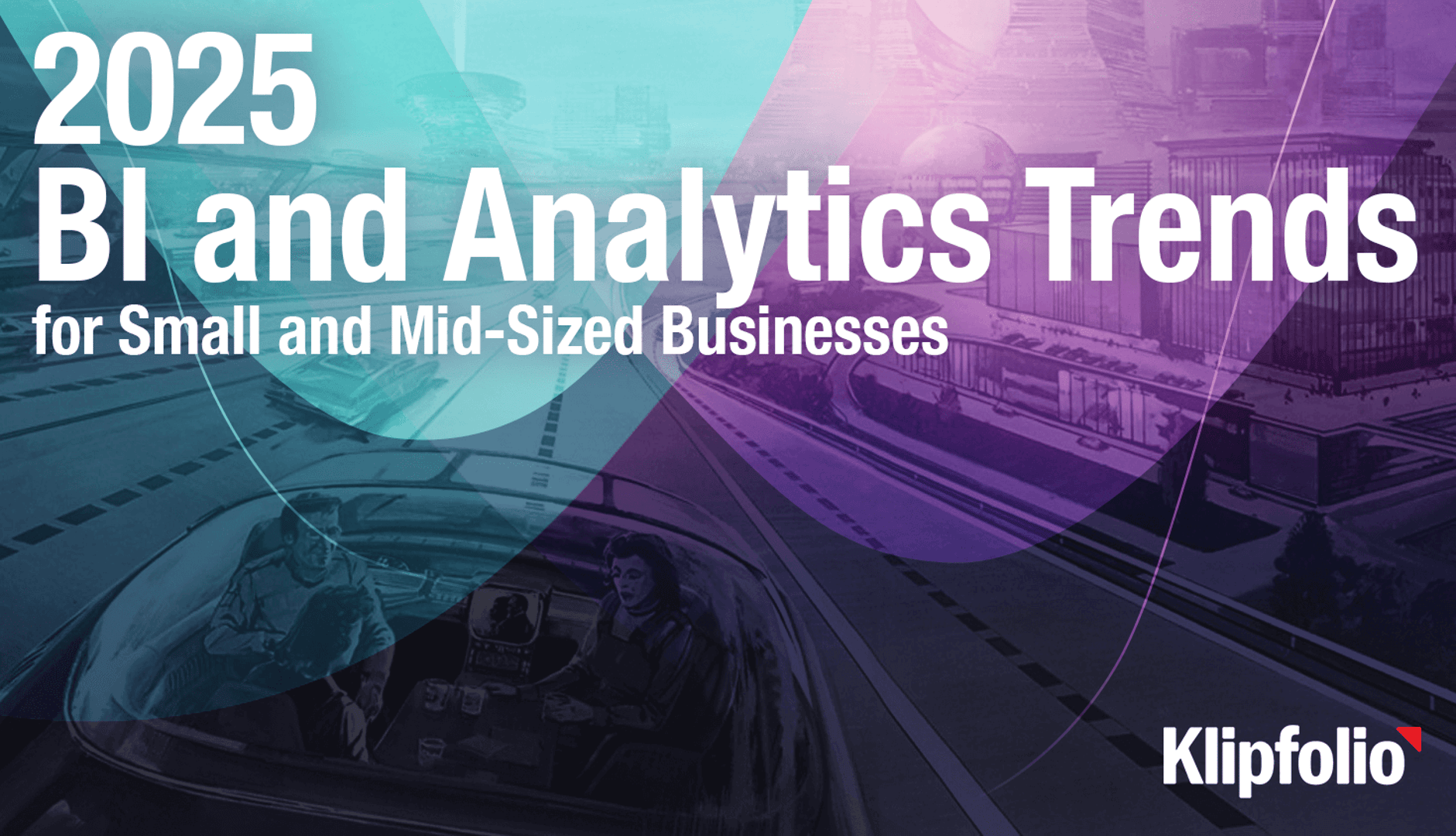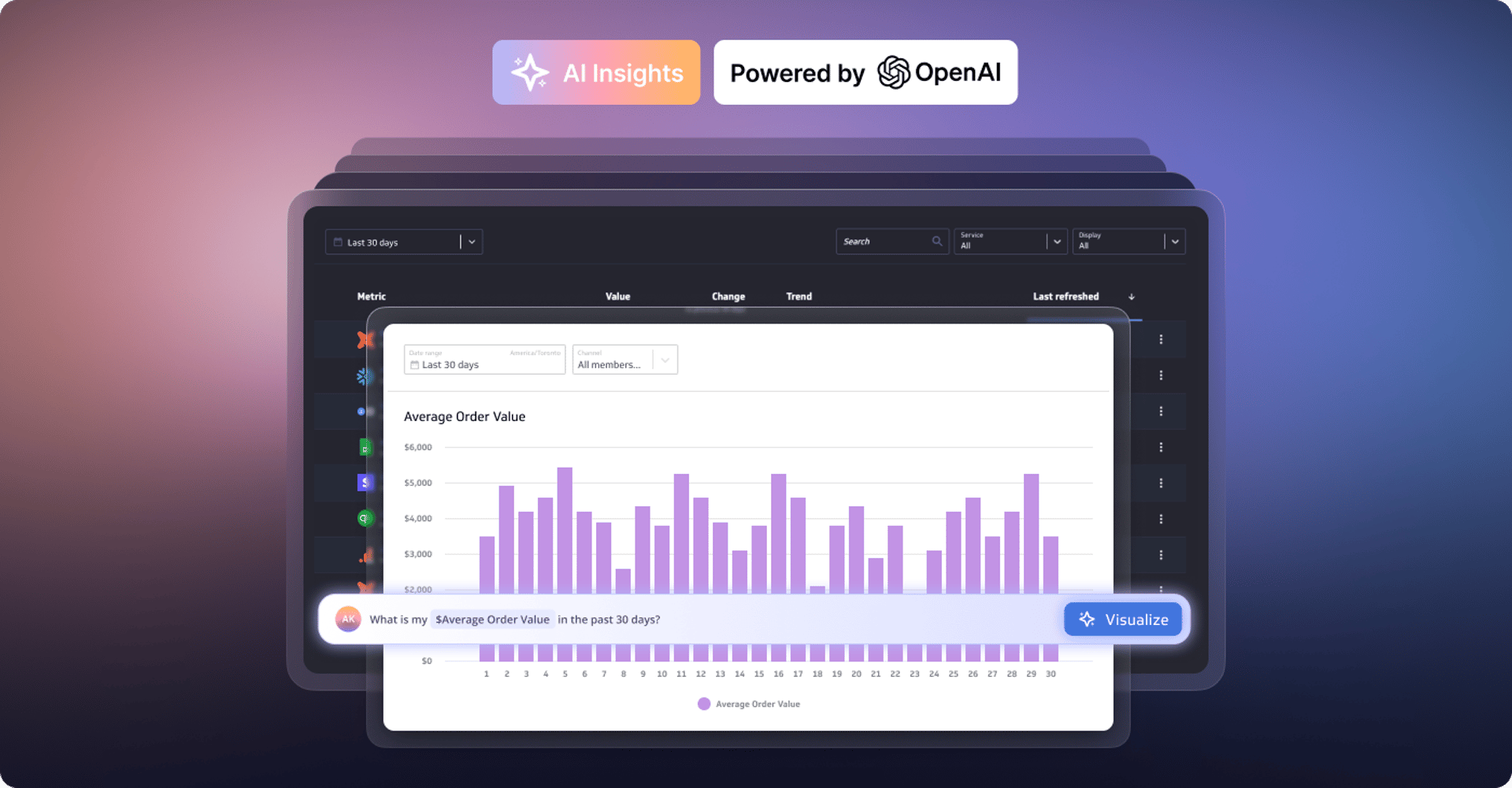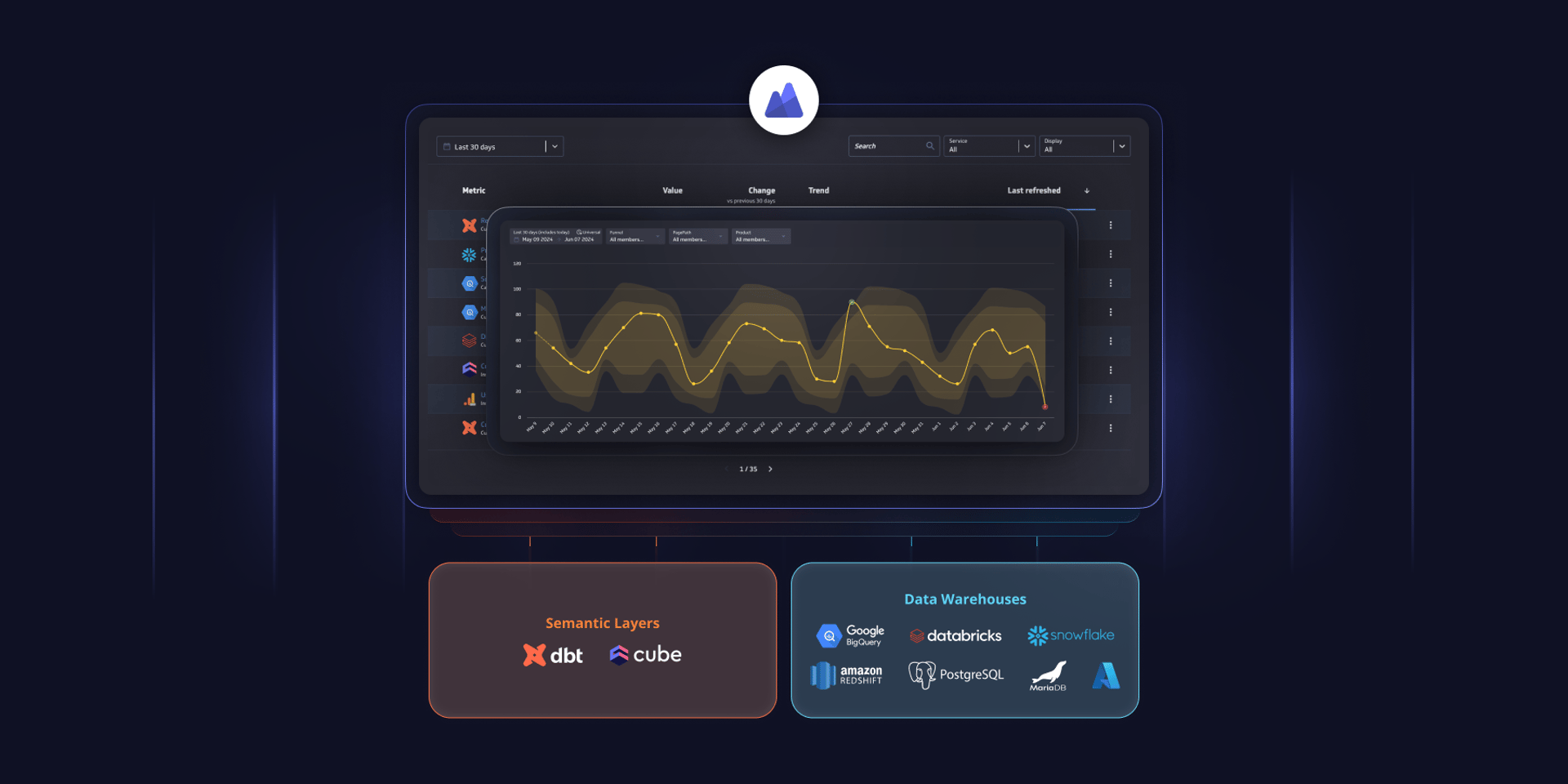Top Six Data and Analytics Trends – 2024

Published 2023-12-11
Summary - While 2023 has been a year of innovation and advancements in data and analytics, 2024 promises to be a year of revolution and change. This exciting transition is mostly driven by advances in Large Language Models and Artificial Intelligence. In this post, Allan Wille, CEO and Co-Founder of Klipfolio shares his outlook on the top six trends in 2024.
Introduction
More than ever, data and analytics play a pivotal role in shaping businesses and society at large. With ground-breaking trends redefining our interaction with data and analytics, 2024 promises to be a monumental year.
So, let’s get to it. Here are my predictions for the top six data and analytics trends for 2024.
#1. The AI Revolution
The combination of LLMs (Large Language Models) and AI (Artificial Intelligence) will have a profound impact on every facet of the modern data stack. In this exhilarating partnership, LLMs access vast amounts of data, but must harness the power of semantics and knowledge graphs to provide invaluable context. Data and analytics professionals will get a front-row seat as the symbiotic relationship between LLMs and AI revolutionizes data transformation, preparation, analysis, and interpretation. A cascade of new features and new possibilities will wash over data teams, business analysts, and users. It's exciting, but, as we all know, not all that glitters is gold. Most organizations still struggle with their data because up to 80% of it is unstructured or lacks semantic meaning. The good news is that LLMs can filter and classify unstructured data enabling the extraction of valuable insights from otherwise “messy” data (like customer support and sales conversations).
#2. Improving Data Literacy
Semantic models and knowledge graphs aren’t just hot topics going into 2024. They’re quickly becoming an indispensable part of the data team toolkit and the future of AI. Along with consistent, reusable metric definitions, these relatively simple models are key to understanding data in context. They simplify consumption for end users and enable AI systems to get meaningful insights from vast, complex data sets. Knowledge graphs are particularly effective at organizing and interlinking data, helping AI understand relationships and connections. At Klipfolio, we've been evolving this concept over the past five years and are excited to see momentum building with Cube, data.world, and dbt Labs.
#3. Increasing Security Challenges
When it comes to governance, security, and privacy, 2024 is set to be a challenging year for data leaders. As businesses continue to innovate with LLMs and data, regulatory and compliance requirements will escalate, increasing the governance burden. In response, software startups are providing innovative solutions. For example, data contracts, to manage the exchange of data between departments, and observability systems, to monitor pipeline uptime and detect anomalies.
As the modern data stack evolves and becomes more complex, security events are likely to increase in 2024. The growing use of LLMs and the proliferation of data products results in significant data transfer across platforms, necessitating advanced security measures. Businesses are expected to heavily invest in sophisticated security systems that ensure data protection and compliance with strict privacy regulations. This may give rise to new security-centric roles within data teams and the adoption of advanced technologies like encryption and secure multi-party computation. Organizations that prioritize security will not only safeguard business-critical data, they’ll also gain a competitive edge by earning the trust of customers and stakeholders.
#4. Emerging New Data Products
Data teams are increasingly adopting the practices of software teams, resulting in the emergence of new data products. The fuel provided by LLMs, the convenience of Data-as-a-Service (DaaS), and the affordability of compute and storage all work together to accelerate this motion.
The need for trusted data, whether for internal applications, powering machine learning models, or facilitating downstream analysis, is as strong as ever. New products that cater to the core functions and responsibilities of data teams, make it easier for those teams to transition to new roles and development processes. As a result, the most advanced data teams now operate similarly to software engineering teams, incorporating product requirement documents, ticketing systems, and sprints. This shift also affects resourcing, cost, and ROI calculations, which may require some adjustments following the tightening in 2023.
It’ll be exciting to see how this trend aligns with lightweight analytic apps that are designed to provide users with the data they need, and where they work. These new, purpose-built apps will likely be delivered as add-ons to existing popular tools. They should provide relief for business users who, for the last 30 years, have been dealing with the challenges of overwhelming business intelligence applications.
#5. Achieving More with Less Data
Two interconnected trends continue for 2024, both centered around maximizing efficiency, agility, and cost savings.
First, the rise of small data: Recognizing that most workloads are small, data teams are leveraging in-memory/in-process databases to analyze and move data. These databases offer swift deployment, rapid scalability, and seamless integration with commercial cloud solutions, enabling enterprises to achieve optimal performance.
Second, workload offloading: Data teams are strategically redistributing resource-intensive queries to cost-effective query engines in real time based on demand. These alternatives may exhibit slightly higher latencies, usage limitations, and distinct performance characteristics, but their cost-effectiveness and ability to handle diverse workloads make them valuable assets in achieving more with less.
#6. Evolving Data Team Roles
Despite cost pressures and the ongoing battle to demonstrate data ROI, data teams are set to play a pivotal role in driving growth, efficiency, and risk avoidance in 2024. In an era where security, semantics, data products, and AI governance are paramount, the expertise and talent of data teams are more crucial than ever. Prepare for the emergence of exciting new data team roles, like AI Governance Specialist, Data Product Architect, and Data Security Officer.
Gone are the days when the data team served merely a supporting function. It’s become an indispensable factor in propelling business success. Companies must recognize this value and invest in building and maintaining robust data capabilities.
Final Thoughts
In 2024, major advancements in data and analytics continue to shape the landscape, particularly when it comes to data literacy and optimized decision making. The rise of semantic models and knowledge graphs provides a comprehensive approach to understanding complex datasets, enabling organizations to extract relevant insights more effectively. Widespread adoption of Language Learning Models (LLMs) and Data-as-a-Service (DaaS) are smoothing the way for the development of data products, reflecting the growing influence of data teams which are increasingly structured like software teams.
However, with escalating regulatory and compliance requirements, data security and privacy will pose significant challenges. Businesses are expected to fortify their data protection measures and comply with stringent privacy regulations, potentially leading to the creation of security-centric roles in data teams. Another trend to note is the efficiency and cost-saving potential of small data and workload offloading.
Finally, data teams will become even more integral to business growth, efficiency, and risk avoidance as team members take on new roles such as AI Governance Specialists, Data Product Architects, and Data Security Officers. These developments highlight the increasing importance of data literacy, as more and more companies recognize the need to invest in building robust data capabilities to make better, informed decisions.
Related Articles

2025 BI and Analytics Trends for Small and Mid-Sized Businesses
By Allan Wille, Co-Founder — December 18th, 2024
Case Study: How Media Propulsion Laboratory improved client analytics with the PowerMetrics – BigQuery integration
By Cathrin Schneider — September 12th, 2024
Metrics provide rich context for better AI: Introducing the new PowerMetrics AI experience
By David Mennie — June 21st, 2024

